- 1. Publish Content To Match Search Intent
- 2. Write User-Friendly Titles and Meta Tags
- 3. Include Your Primary Keywords In the URLs
- 4. Use Keywords In Your Content
- 5. Optimize Your Page Headings
- 6. Optimize Your Images For SEO
- 7. Use Internal Links Strategically
- 8. Secure Your Website With HTTPS
- 9. Reduce Your Website's Loading Speed
- 10. Build High Authoritative Backlinks
- 11. Update Your Existing Content
- 12. Publish Useful Content Targeting New Keywords
- 13. Avoid Keyword Cannibalization
- 14. Optimize Your Content For Search Features
- 15. Avoid Duplicate Content Issues
- 16. Use Structured Data
- Next Steps
There are hundreds of SEO factors to consider when optimizing a website for search engines, but not all factors are equal. Some rules are more important than others, and in this post, you’ll learn the best SEO practices to improve your SEO rankings.
The list was carefully crafted to include strategies that cover all SEO concepts, including on-page SEO, technical SEO, and Off-Page SEO.
1. Publish Content To Match Search Intent
For any page to rank high on Google, it has to serve a specific purpose. Google ranks pages with content that answers a user’s query, called the "search intent". For example, consider this query: "How to make sugar cookies."
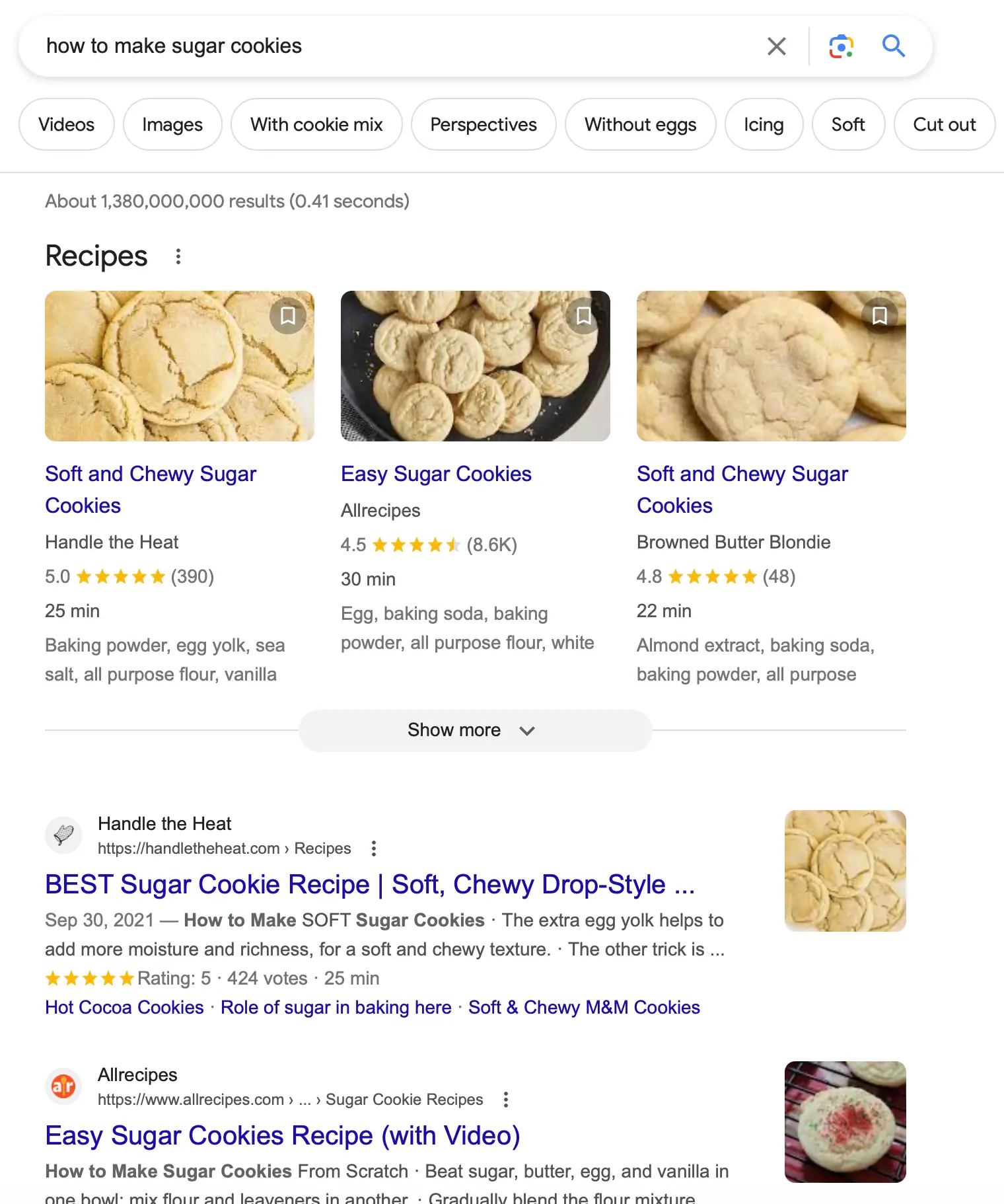
The top results contain recipes and videos for making sugar cookies. Google understands that the user's intent is to get a set of instructions, not to buy a product.
In contrast, if you search for "buy sugar cookies, " you'll get different results. Google understands that the user intends to purchase a product, which is reflected in the results by showing product pages from sites selling cookies.
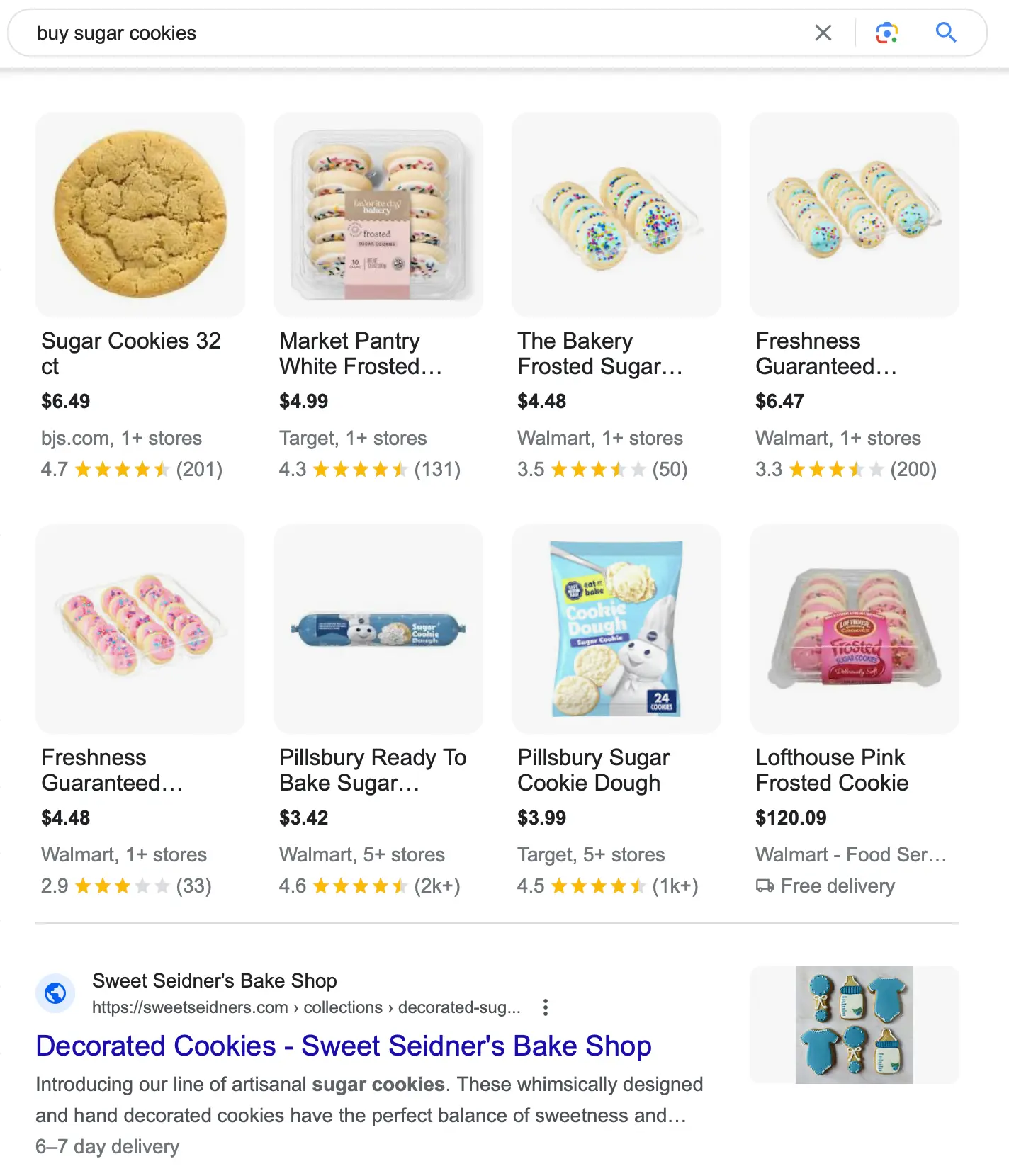
Best Practices
Before deciding on what topics to cover in your posts, it is essential to do your research to find out two things:
- What people type in the Google search box and provide content that is relevant to their queries. This is known in the SEO world as keyword research.
- To analyze the top results for each keyword and understand what kind of content to use. This includes the format of the content, type, and length.
2. Write User-Friendly Titles and Meta Tags
Page title optimization is perhaps the most important SEO factor. The page title tag gives search engines a very good hint of what the page content is about. It is also shown in the search results and social media snippets.

Best Practices
Ensure that you include keywords that users recognize in the title. This will help search engines associate your page with particular keywords and make your search snippet more relevant to users.
- The title should be short (a maximum of 60 characters) to be shown without breaking on desktop and mobile search results.
- Use power words (such as top, best, complete, amazing, and definite) to make the title more interesting and invite users to click it.
- Adding brackets in the title is proven to increase CTR (click-through rates).
Pro Hint:
Before deciding on a post title, open Google, search for your target keywords, and study the titles shown on the first page of Google.
Ensure that your title does not duplicate what is already there. Google rarely ranks pages with exactly the same titles on the first page of the results, so make sure your title is unique and different from the rest.
The meta description is hidden from users but accessible by search engines. It is shown in the search results as part of a search snippet.
Although search engines may use a different value for the meta description and not show what the user specifies, it’s always a good SEO practice to have unique meta descriptions for ALL your pages.
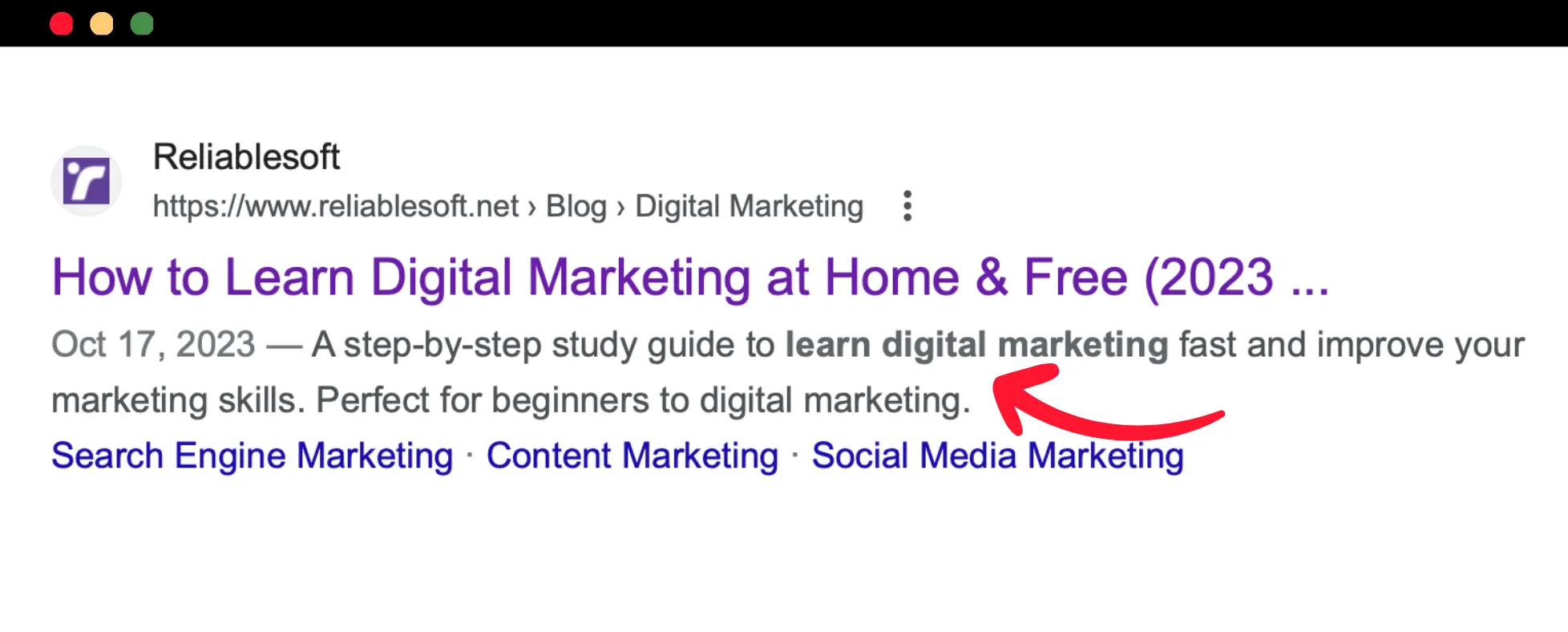
Best Practices
Keep the meta description to 160 characters.
Add your target keywords in the description. This will make your search snippet more relevant to users' searches and help search engines highlight the matching keywords, making it more attractive to clicks.
For eCommerce websites, use the meta description to give users more information about your products (like price, color, sizes, etc.) and any available special offers.
3. Include Your Primary Keywords In the URLs
Providing for SEO-friendly URLs is essential but neglected by many SEOs.
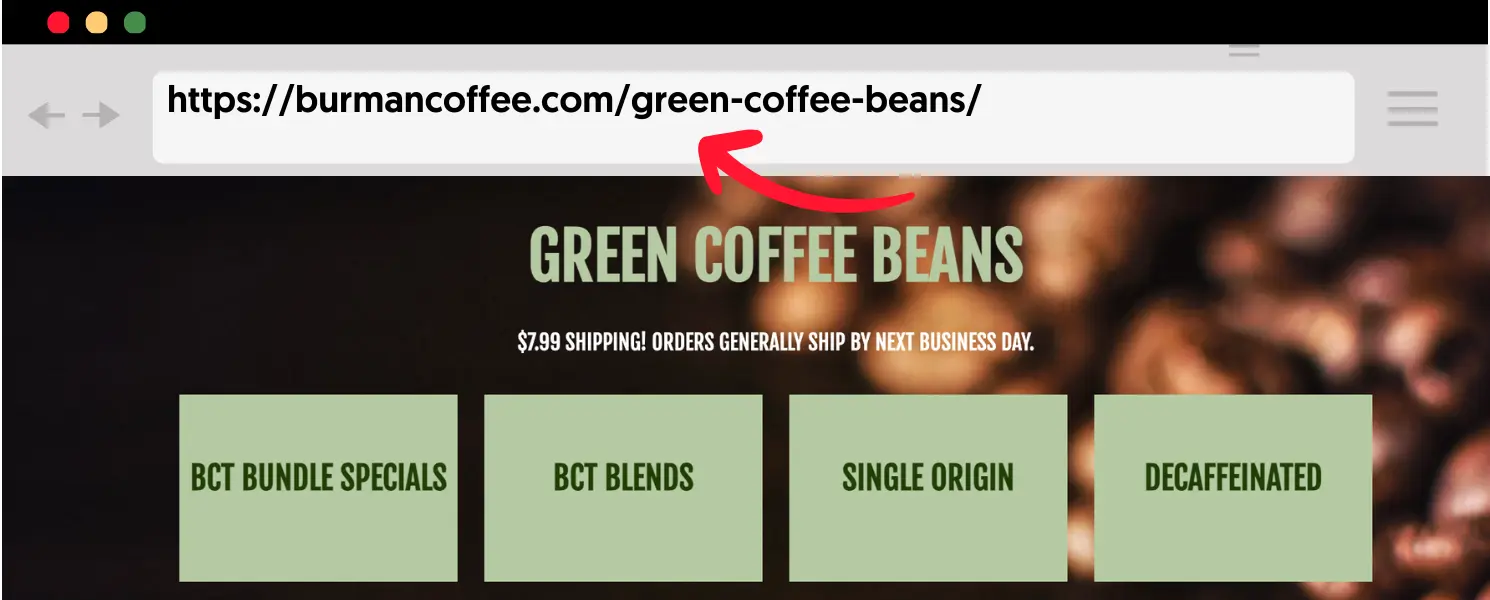
Having URLs that are short and informative is beneficial because:
- They are shown in the search results (see example above).
- When a URL is shared in a social media post or forum, it is easy for users to understand the page's content.
- It’s a great way to give search engine crawlers another hint about the page.
Best Practices
Unlike page titles, URLs have to be short and precise. There is no need to include additional information or words in the URL. It’s a good practice to strip common words (it, on, the, etc.) and keep the URL as short as possible.
Make URLs an exact match of your target keyword or an exact match of a long-tail keyword.
For example, if your page title is "10 Best SEO Certifications (Free & Paid)" the URL can be https://www.reliablesoft.net/seo-certifications.
In the above example, the target keyword is "SEO certifications, " which is used as an exact match in the URL.
Pro Hint: Avoid having dates in the URLs. This will help you update your content without worrying about the URL.
For example, if you have a post titled "Best SEO Practices for 2026" in the URL, keep only the /best-seo-practices part and don’t include the date. This way, the URL won’t be an issue when you update the title and content.
4. Use Keywords In Your Content
You should also use keywords in your content, in addition to using them in your title tags, descriptions, and URLs.
Best Practices
Include your primary and related keywords in your opening paragraph and the first few paragraphs of your page or post.
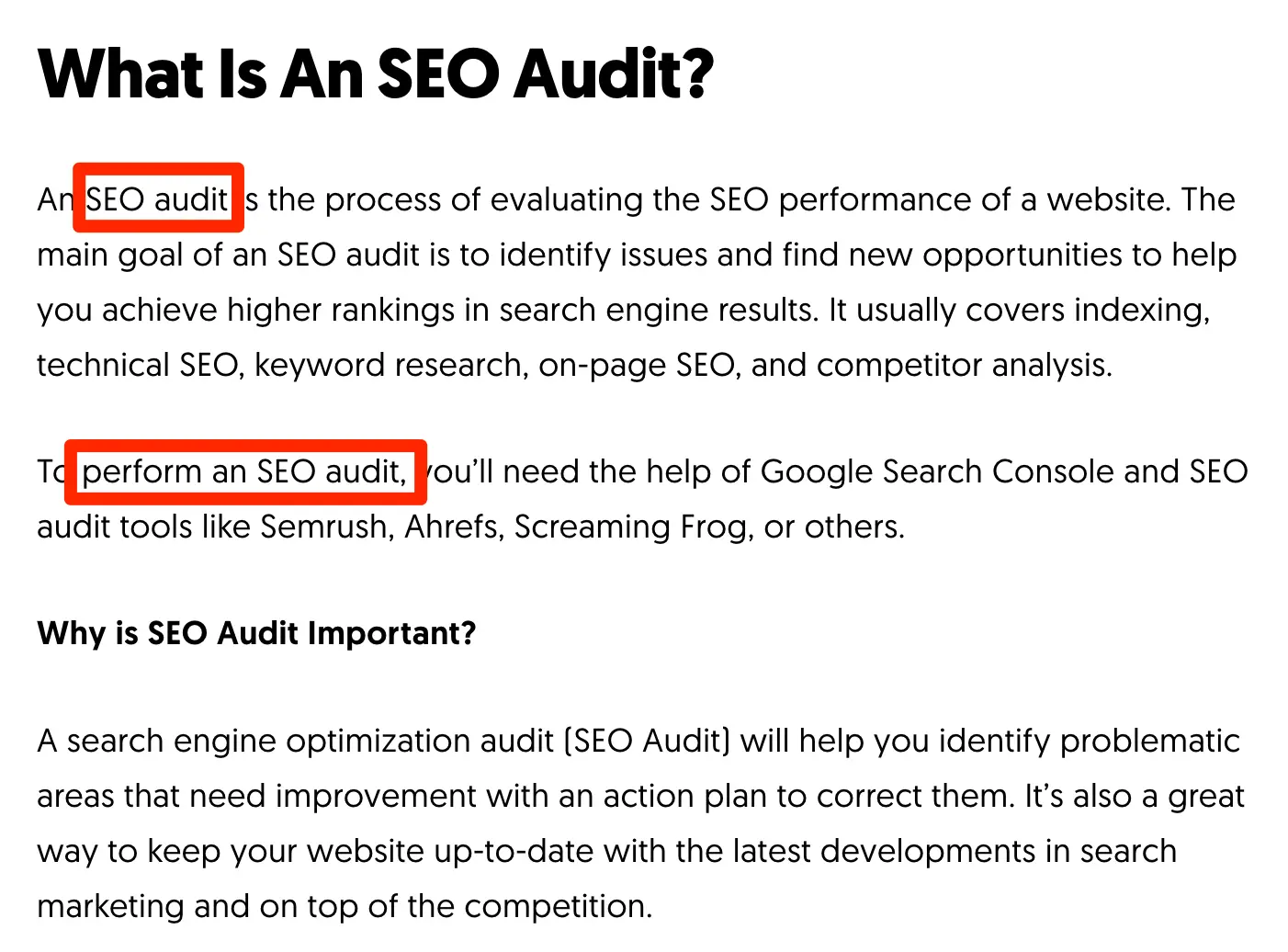
Keeping your post introductions short and having keywords that users can recognize high in your opening paragraph makes the content more relevant to their search query, increasing the chances of staying on your page to read the rest of the content.
It also helps search engines associate your page with the keywords you want from the beginning.
Pro Hint: Avoid keyword stuffing. Add the keywords naturally in the text to give users and search engine crawlers a good idea of your page’s context.
5. Optimize Your Page Headings
Understanding and effectively utilizing HTML headings (H1, H2, H3, etc) is critical to SEO best practices.
The H1 tag (<H1>) is shown on the body of a page, while the page title (<TITLE>) is shown in the browser window, social media snippets, and organic search results.
The role of the H1 tag and other headings (H2, H3, etc.) is to make content more accessible for users to read and faster for search engines to scan. If you are confused, read more about the difference between a page title and an H1 tag.

Best Practices
Although Google has mentioned a few times that having tags marked as H1, H2, etc, is not a big deal, optimizing your headings for best SEO practices is good.
- There should be only one H1 tag per page. This is for the page title, which is shown at the top of the document.
- Structure your content so the main headings are <H2> and subheadings are H3.
- In the headings, include keywords relevant to your target keyword to help users and search engines understand what the particular section of the page is about.
Think about this like the structure of a book where the page title is the book's title (that’s the H1), the main headings are the chapters (that’s H2), and the critical sections within a chapter are the H3.
Pro Hint: If you start structuring your content using headings, you make the page easier to scan for users who like to skim-read content. Headings can also get users' attention and keep them on a page longer.
6. Optimize Your Images For SEO
Images are part of a page’s content, but search engines have trouble understanding the context of an image during the crawling and indexing phase.
For this reason, it is recommended that you use ALT text for all your images. The ALT TEXT is an attribute added to the image tag that describes the image in plain words.
Best Practices
For best SEO results, follow these practices when adding alt text to your images.
- Specify an ALT text for all your images (including the site logo)
- Write alt text that is representative of the image
- Use multiple words, but keep it short (one sentence only)
- Include your target keywords (or related in the alt text)
- Don’t use the words ‘image’ or ‘picture’; they are unnecessary. Google knows what it is.
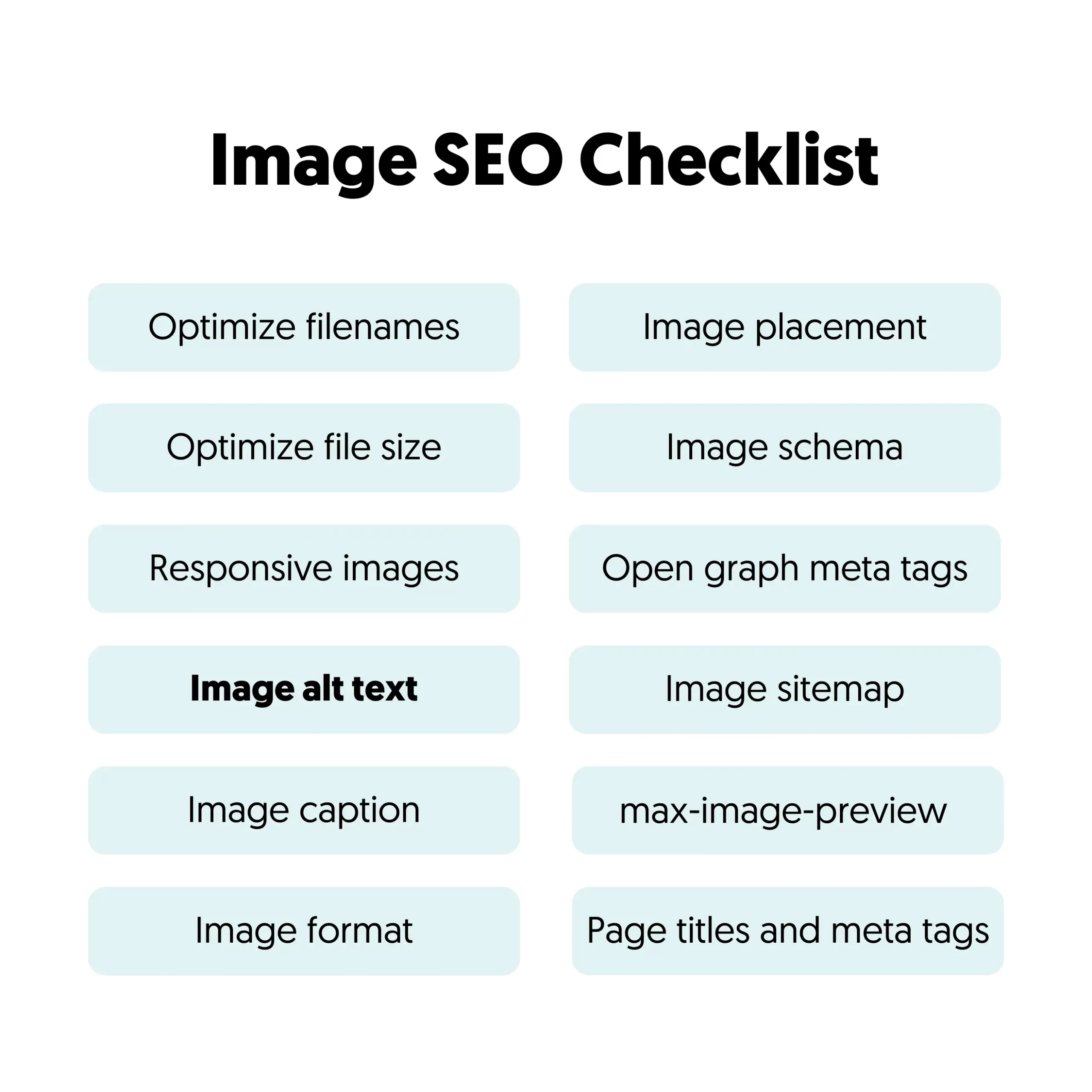
Pro Hint: Besides optimizing the image ALT text, you should follow image SEO best practices. The most important are:
- Choose the right file format: The most commonly used formats for the Web are Jpeg, Png, Webp, and Svg.
- Compress your images: Large images can slow down your page speed, negatively impacting your SEO. Use image compression tools to reduce file size without losing quality.
- Create descriptive file names: Just like ALT text, the file name of your image should be descriptive and may include a target keyword. This further helps search engines understand and index your images correctly.
- Use responsive images: Ensure your images look good on all devices. This can be achieved by using HTML's srcset attribute, which allows different image resolutions to be served depending on the user's device.
7. Use Internal Links Strategically
Internal linking is a great SEO practice. You can use internal links within your content to link to other website pages.
This helps Google discover and index more pages from your website and allows users to learn more about a topic.
Look at the internal links in this post and notice how they can help the reader find out more details about a specific SEO practice.
Best Practices
Pay special attention to the anchor text of internal links. The anchor text is the visible part of a link. Google has many times mentioned that you should use meaningful anchor text that accurately describes the target page.
For example, if I want to link to my ‘Become an SEO Expert’ page, I will use the anchor text ‘Become an SEO expert’, or ‘SEO Expert’ instead of ‘Read this’ or ‘Click here’.
- For best practices, don’t use general words but anchor text that makes sense.
- There is no Google penalty for using keyword research anchor text for internal links.
Pro Hint:
If you have difficulties adding internal links naturally in your content, you can use a ‘Further Reading’ or ‘Related Articles’ section and link to other articles using the full title. See the example below:
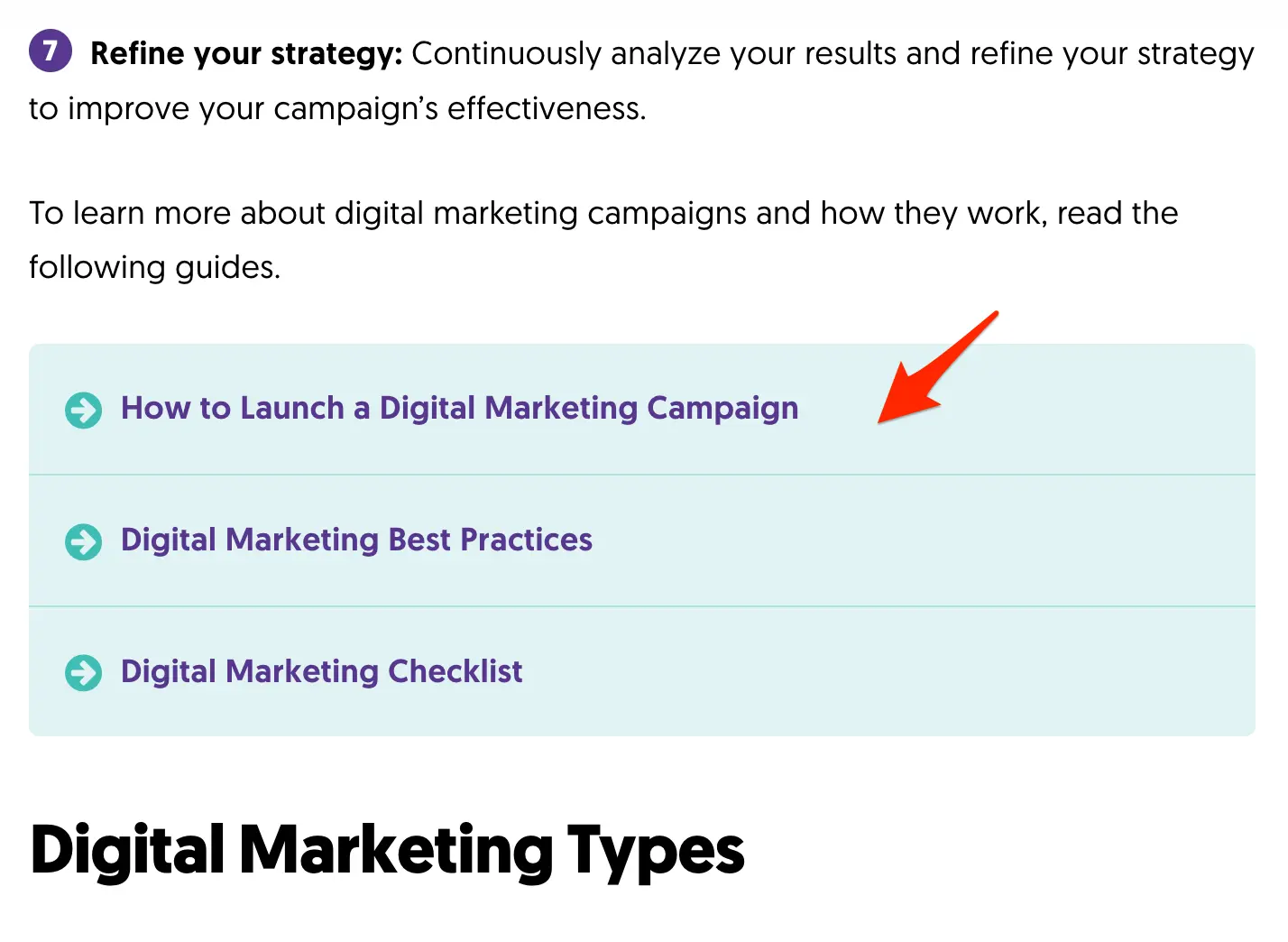
8. Secure Your Website With HTTPS
This is a must for SEO purposes and for winning users’ trust. An HTTPS indicates that the communication between the website and the server is secure and any user data entered is encrypted.
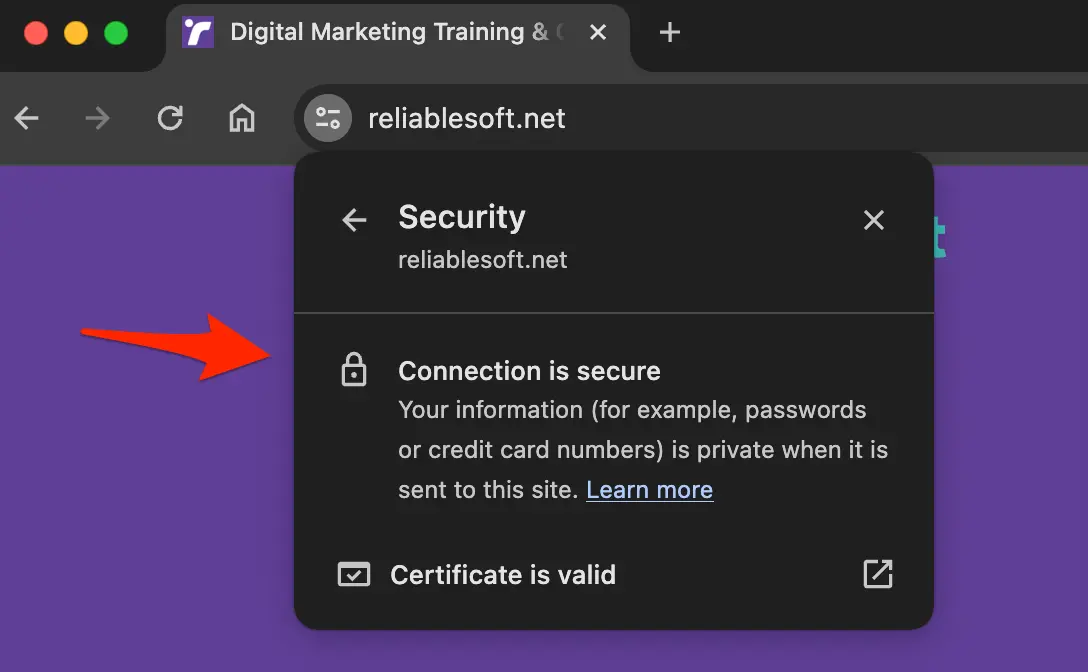
Best Practices
- Ensure you install a valid SSL on your server and all links (either internal or external), and start with HTTPS. This includes links to images, CSS files, and JavaScript.
- Make sure that your website listens only to HTTPS requests. When a user types a URL without the HTTPS, the website should automatically redirect the user to the HTTPS equivalent version.
Pro Hint:
If you are migrating from HTTP to HTTPS, ensure you do the transition correctly without affecting your SEO.
This involves adding 301 redirects for all your URLs and adding and verifying all 4 versions of your website with Google Search Console.
9. Reduce Your Website's Loading Speed
Page Speed is a known Google ranking factor. Other things being equal, websites that load fast are likelier to rank higher than slower websites.
Speed also impacts conversions and customer retention, especially on mobile devices.
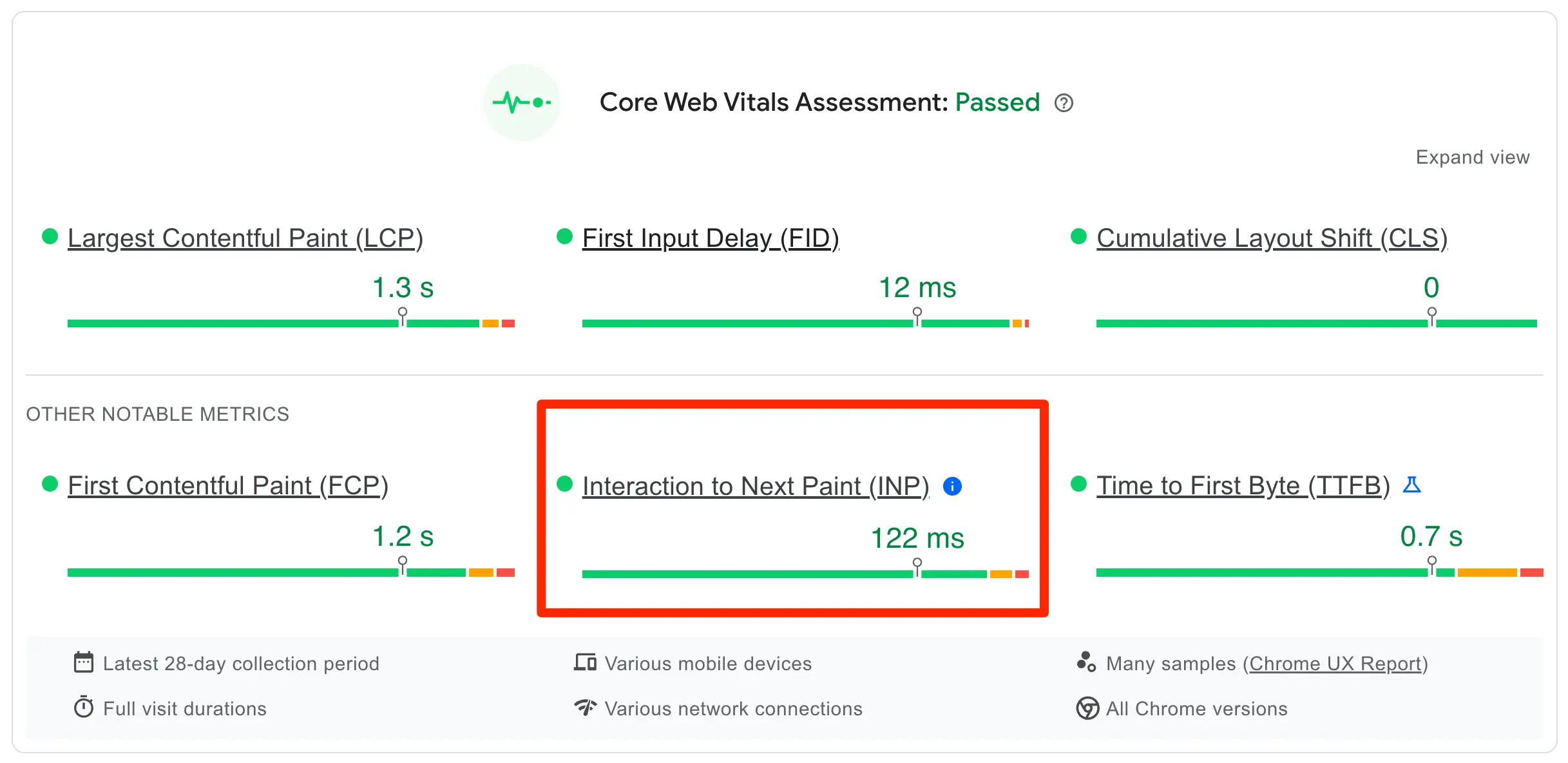
Best Practices
Check your site speed with Google page insights and try to achieve the following core web vital scores:
- Largest Contentful Paint (LCP) –2.5 sec or less
- Cumulative Layout Shift (CLS) – 0.1 or less
- Interaction to Next Paint (INP) – 200 ms or less
Pro Hint:
One way to improve your website's loading time is to use lazy loading for images and videos. Lazy loading is a mechanism by which videos or images are not loaded until they are in the user’s viewport.
10. Build High Authoritative Backlinks
To achieve high rankings on Google, you need backlinks. Backlinks in SEO are considered votes of trust, and they positively influence your rankings if they meet the following criteria:
- Links are coming from high-authoritative websites (websites with high domain authority and Google trust).
- Links that don't have the nofollow attribute.
- Links that were added naturally by the webmasters (i.e., they were not paid or part of an exchange).
Best Practices
Think outside the box and be creative when it comes to link building. What would make you link to a website or talk about a brand?
Building personal connections by contacting people who can potentially link to your website or mention your brand is the best way to build links these days.
Forget about mass emailing. It no longer works. Instead, create a list of people you want to contact and personalize your messages as much as possible.
Another way to build high-quality links is to replicate your competitors’ link-building strategies. Use a backlink checker tool to find out who links to your competitors and analyze the pages with the most links.
What topics do these pages cover? What's the content format and style? How long is the content?
Your goal is to produce linkable content that is better than your competitors and to attract links naturally.
11. Update Your Existing Content
Following the SEO best practices described in this post will increase your rankings, which is a great first step. To maintain your rankings, you must keep your content fresh and up-to-date.
Google does not want outdated content in its results, so you need to update your existing content regularly.
Best Practices
- Review the content for accuracy.
- Add more text content (if applicable).
- Check for broken links.
- Remove / Update outdated graphics.
- Update links pointing to old studies or data that is no longer valid.
- Review your meta descriptions.
- Consider enhancing your content with structured data.
- Change the last updated date to reflect the date the page was last updated.
- Ensure that the content matches the search intent.
Pro Hint:
When you make significant changes to a page that is already ranking and want your changes to appear faster in the results, ask Google to recrawl your page. This will speed up the process dramatically.
12. Publish Useful Content Targeting New Keywords
You need to publish content targeting new keywords to increase your organic traffic.
Best Practices
- Create a content calendar and try to establish a publishing schedule. This will help search engine crawlers and users know when to expect new content from you.
- Ensure you target new keywords, not those you already have content about (even if your content is not ranking high in the search results).
- Publish high-quality, helpful content. Before deciding on what to publish, check the first page of Google. If you can do something better, go for it; otherwise, choose a different topic/keyword.
- Publish cornerstone content when it matters. Content length is not an SEO ranking factor, so spend your time and resources wisely. You don’t have to write 2000 words for every article you publish.
Pro Hint:
Use Google Trends to discover trending searches related to your industry. If you see a topic listed as Rising, then go for it. Topics listed in Google Trends indicate that more people than usual are searching for that topic, and Google would love to get new content around it.
13. Avoid Keyword Cannibalization
Keyword cannibalization is when multiple pages on a website target the same or similar keywords. As a result, these pages compete against each other in search engine results.
This confuses Google, sometimes leading to not showing any of these pages in the results.
Best Practices
Each page on your website should target a specific keyword. If you have pages targeting the same keywords, you should consider merging the two pages into one, adding a 301 redirection, and removing the duplicate page.
Pro Hint: As your site grows, it is common for pages to target similar keywords. To solve this problem, it is recommended that you perform a content audit regularly and address these issues.
14. Optimize Your Content For Search Features
Optimizing your content around specific keywords is not enough. You should optimize your content for search features like site links, rich results, and featured snippets to gain the best possible visibility on Google.
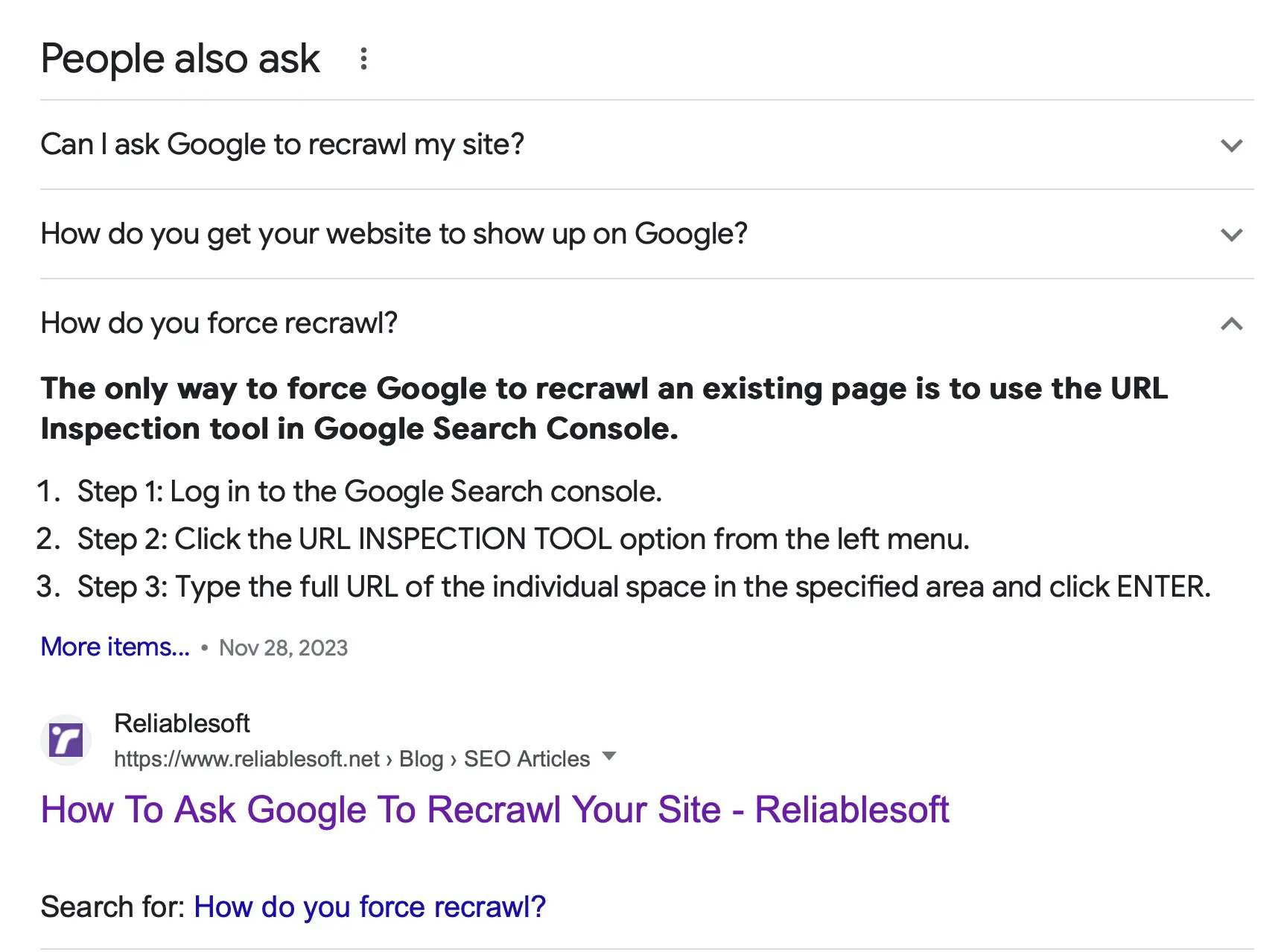
Best Practices
- Sitelinks are automatically added to a search snippet and displayed in the search results. Although Google does not allow you to specify which sitelinks to use, you can follow several practices to get sitelinks for your website.
- Featured snippets appear above the organic results. To get featured snippets, you must provide direct answers to user queries.
- Rich snippets are enhanced versions of regular search snippets, with images and other details that help them stand out in the SERPs.
15. Avoid Duplicate Content Issues
One essential practice of technical SEO is the correct usage of canonical URLs. A canonical URL solves duplicate content issues by specifying which version of a page to include in the Google search results.
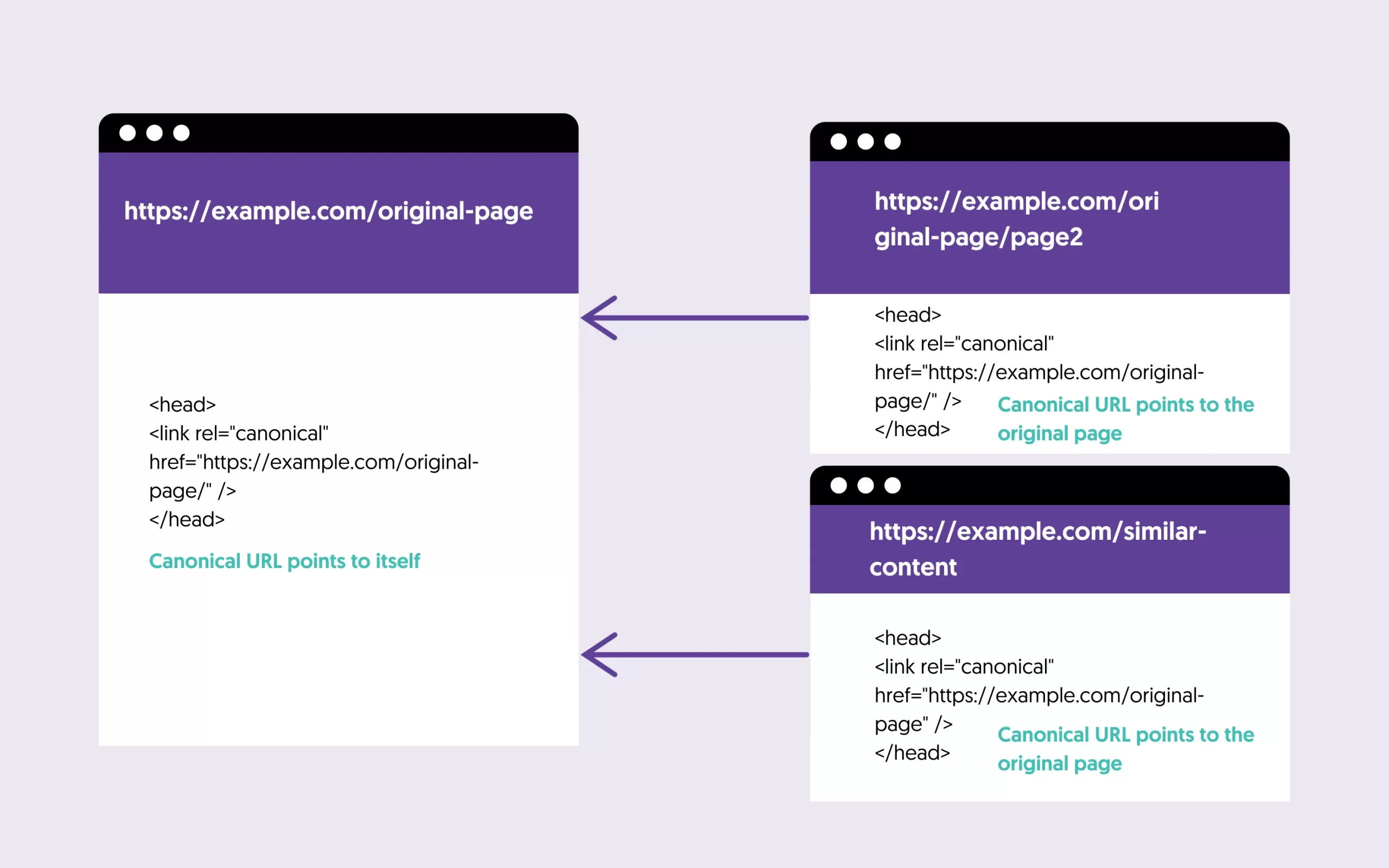
Best Practices
- Ensure all your pages (including the homepage) have the canonical URL defined in the HEAD section.
- All canonical URLs should be defined in the same format as your homepage.
- For pages with the same or similar content, choose which one you want Google to index and configure your canonical URLs accordingly.
Pro Hint:
Use canonical URLs to solve duplicate content issues for pages you don’t want to remove from your site. Consider adding a 301 redirection instead of a canonical URL for pages you can delete or merge.
16. Use Structured Data
One of the modern SEO best practices is using structured data. Adding structured data to your website helps search engines understand your content better.
Google uses structured data information to display rich snippets and other search features.
Best Practices
- Add the right type of structured data to your pages. You can view the list of all available types here.
- Add structured data on the homepage (website, company, or local business are good candidates).
- Check your code for errors using the structured data testing tool.
- Use the URL Inspection tool to check for errors.
Pro Hint:
Read Google’s guidelines for structured data markup usage, and don’t try to bypass or ignore their rules.
Implementing structured data will improve your rankings and help with voice searches.
Next Steps
Best SEO practices will help you get your website in good shape. To further improve your SEO performance, read the following guides:



